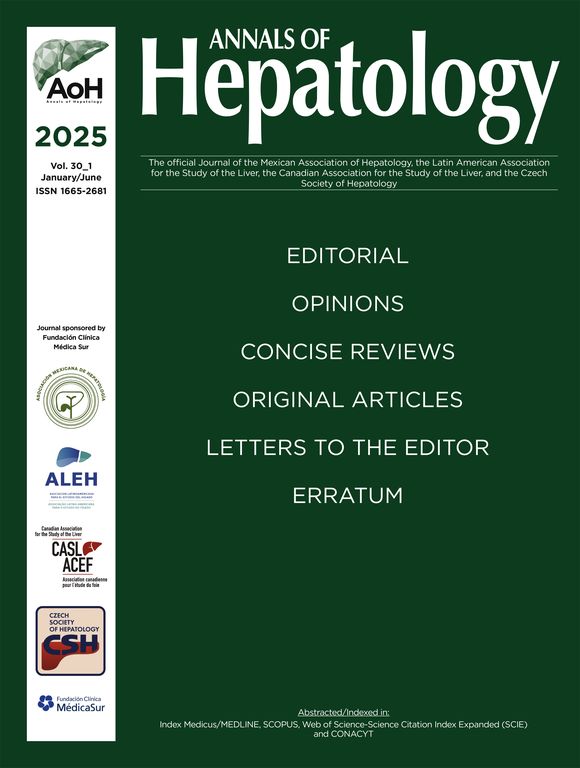
Abstracts of the 2021 Annual meeting of the ALEH (Asociación Latinoamericana para el Estudio del Hígado)
Más datosExtrahepatic portal vein obstruction (EHPVO) is a frequent cause of noncirrhotic portal hypertension in children.
ObjectiveDescribe the experience in the surgical treatment of EHPVO in children, in a developing country.
MethodsRetrospective case series study, with medical records review of patients with EHPVO, who underwent surgical treatment, by an experienced surgeon, between July 2016 and May 2019. Patient profile, laboratory test, images, liver histology, surgery performed, postoperative complications and shunt patency were analysed.
Results12 patients, median age of 4 years, umbilical catheterization was present in 8 patients (66,6%). Ten patients performed portography, and 60% had type A by Baveno VI criteria. Despite normal liver tests, liver biopsy revealed ductular proliferation in 83,3% of patients and mild portal fibrosis in 66,7%. Splenomegaly was present in 91,7% and thrombocytopenia in 83,3%. All patients had oesophageal varices and gastrointestinal bleeding occurred in 83,3%. Among the coagulation tests, the deficiency of C and S proteins is noteworthy in most patients, with 72,3% and 63,6% respectively.
It was possible to perform meso-Rex bypass in 10 patients (83,3%); in the other 2 distal splenorenal shunt was performed. Early post-operative complications occurred in 58,3% of patients, the most common was ascites in 4 (33,3%), which resolved in less than 1 month. One patient developed shunt thrombosis in the first 7 days after surgery, not resolved with thrombectomy. In outpatient follow-up one patient developed thrombosis in the Rex shunt and another 4 had stenosis. All of them underwent to interventional radiology. Currently 8 of 10 meso-Rex patients (80%) have patent shunt.
ConclusionRex shunt is possible in developing countries with an experienced surgeon and multidisciplinary team.








